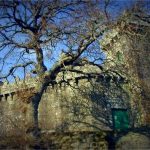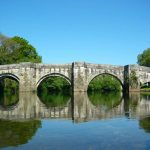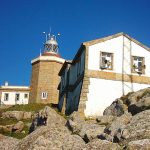PLACES OF INTEREST
Casa Loncho is located only a few minutes away from some of the most emblematic places in Costa da Morte such as Ézaro, Corcubión, Finisterre, Carnota or Muxía among others
- The church of Santiago at 300 meters from our home, surrounded by hórreos (grain storage buildings). This church was built in the late XII century, with multiple reforms. It consists of interesting architecture of its original likeness of the apostol.
- Santa Lucía chapel constructed in the late XIII and XIV. It celebrates the popular Easter festival on Easter Monday.
- Ponte Olveira, village and bridge near the river Xallas, in which you are able to view the marvellous river scenery. In this locality in the year 1809, a battle against the napoleon armies took place during the Napoleonic invasion in the Iberian Peninsula.
- Naturmaz, there is an aerodrome for tourism and adventure situated next to the lake of A Fervenza, in the river Xallas.
- The medieval castle of Vimianzo, which has a permanent display of local, medieval origin, handmade artefacts.
- Ézaro, waterfall and impressive views of the river Xallas (the only river that ends in a waterfall) Cabo of Fisterra with a view to the Atlantic ocean.
- Monte Pindo, mountain of 600 meters also know to historians as el Olimpo Celta with a view of the waterfall of Ézaro and the beach of Carnota.
- Carnota beach, was named by the German magazine Traun Stände, in the year 2006 as one of the one hundred most recommended beaches in the planet. An immense mass of sand washed by the Atlantic ocean, with its white sanded beaches and crystal clear waters, crowned by el Monte Pindo.
- Corcubión, marine villa, populated since the medieval era, which include a maritime museum.
- Fisterra, the final point of the journey (el camino), considered by the romans as the end of the earth, in which you will be able to enjoy its surroundings and views of the Atlantic ocean, with a spectacular sunset. It also has a fortified castle of San Carlos from the year XVIII and a church Nosa Señora das Areas, in which you will find a medieval representation of Christ’s crucifixion. Festival of good Sunday.



















